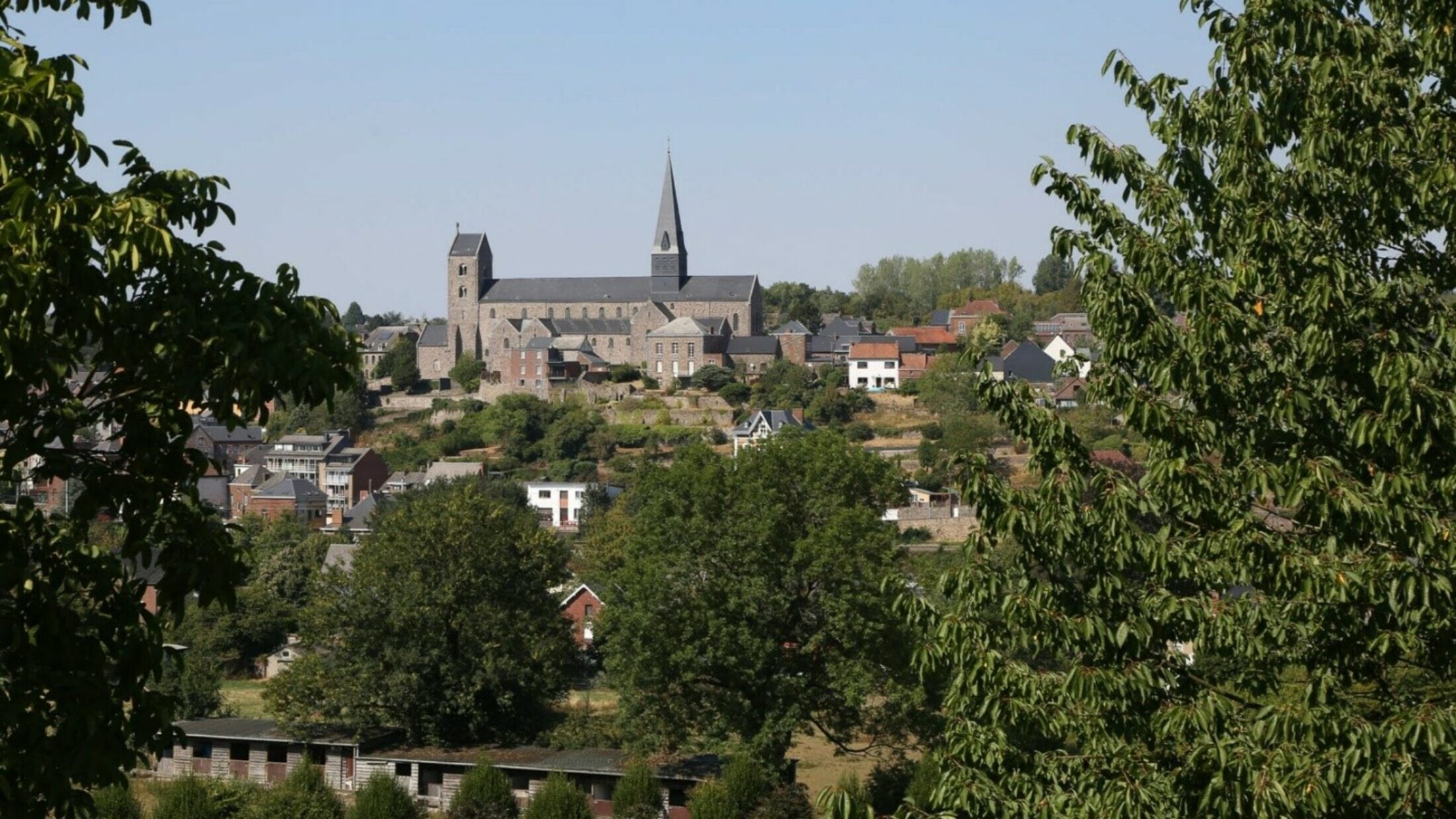Belgium’s oldest church is in the Charleroi Metropolitan Area… and is celebrating its 1200th birthday!

Saint-Ursmer Collegiate Church, Lobbes
Lobbes. A small, idyllic town in the western part of the Charleroi Metropolitan Area; a community built on a hill at the foot of the Saint-Ursmer collegiate church. A visit to Belgium’s oldest church, still widely unknown, is a must for anyone wanting to explore the Charleroi Metropolitan Area.
This year, the building celebrates its 1200th anniversary! It’s a jubilee that will be celebrated throughout 2023, and all the more reason to discover the thousand-year-old history of this place!
Check out the website to see the full programme of activities!
Whilst preparing your visit to the church, read the Charleroi Metropolitan Area’s article on the collegiate church below.
At the foot of the collegiate church, we learn that Belgium’s oldest church dates back to 823. “The church has always been in use: 48 generations have held baptisms, funerals and prayers there”, one admirer tells us.

White walls and floor
Inside, the simplicity of church is striking: pure, white walls, traditional windows, a wooden ceiling. A far cry from the style of collegiate churches that you might have pictured. ‘A feeling of starkness, emptiness, soulless’, says Laura, a visitor. However, many find the emptiness soothing.
Another couple of visitors, sitting in the crypt, are forming the same impression. They are awestruck: he was really surprised by this unusual style: ‘It’s worth the detour’. For her, she loves the stillness of the crypt: ‘It’s so soothing, simply magical’.
You can’t help but feel the calmness descend as you walk around the church.
The unusual style of the collegiate church is just waiting to be discovered.
The first monk illustrators in the world
In a corner of the collegiate church, between the candles and an altar, we stumble upon a plastic canvas with drawings on it. The sexton explains that it represents the first illustrations (in the world!) from the Bible, created right here. In this place, in 1084, the monk Goderanus became the very first illustrator: he revolutionised the Bible by illustrating the first letters of the chapters with symbolic events.
These illustrations helped the monks to read the Bible more enthusiastically. They were also topics of conversation between the iconoclasts of the period. This extremely precious historical document is housed in the Musée du Grand Séminaire de Tournai and has returned to Lobbes for the festivities. With security being sparse at the venue, this precious historical gem gets locked up for the night in the Erquelinnes police’s safe.

The story of the unlucky knight Odin
There are legends everywhere you turn here. In addition to those about Martha who fell into the well with her baby or the wheelbarrow woman who talked too much, the story of the knight Odin is one that always proves a hit with visitors.
This knight had been spying for a number of years on the Emperor of Mons and had never been caught. Until the time when he was followed to the collegiate church and decided to hide in a tomb. The monks found him. He was lying in the tomb, like a corpse. He was a magnificent blonde knight in armour. When the monks discovered him, the knight leapt from the tomb, was chased and caught. The knight Régnier au Long Col, who accompanied the monks, then decided to avenge his emperor and cut of his head right in front of the collegiate church.
We find two reminders of this story in the collegiate church: the tomb in the crypt which was broken during the chase and a red stone which harks back to the blood that flowed across the paving stones at the foot of the entrance wall. Today, the stone also serves to block up a condemned door.

A pile of bones on the collegiate church lawn
It is curious to know that the collegiate church was built for the purpose of blessing a cemetery. It is said that when the gardens around the collegiate church were developed in 2006, the workers gathered a huge pile of earth in front of the entrance. With the morning dew, the dust disappeared and thousands of bones appeared in the open air. Imagine how the residents who discovered them must have felt…
A bit further away in the gardens, there are two bell towers: one is Roman, the other Carolingian. The story goes that the first bell tower was built in the eleventh century with the help of a bear to carry the materials; horses and cattle having left with the Crusades.
A pile of human bones was found at dawn at the foot of the collegiate church.

An unholy grudge
It’s also worth noting that the people of Lobbes hold grudges. Since 1409 and the Battle of Othée, the residents of Lobbes have held a grudge against the people of Binche: after the defeat, the canons of Lobbes were transferred under the governance of Binche. A change of power that had always been hard to swallow, to the point at which a ceremony was held in 2009 for ending the hostilities towards Binche.
Once you’ve spent an hour there and made all of these unusual discoveries, you can’t help but agree: this collegiate church and all the secrets it holds, in spite of first impressions, really is worth the detour.
The residents of Lobbes have harboured a grudge for more than 600 years against the residents of Binche.
Contact:
Collégiale Saint-Ursmer
Rue de l’Eglise 1,
6540 Lobbes
+32 (0)71 59 00 23
©Photos/Christophe Vandercam